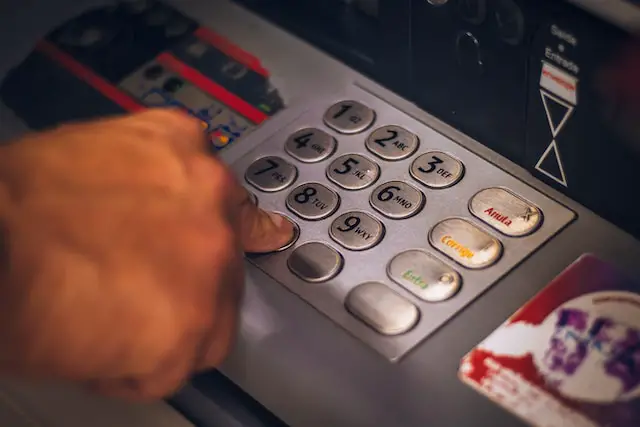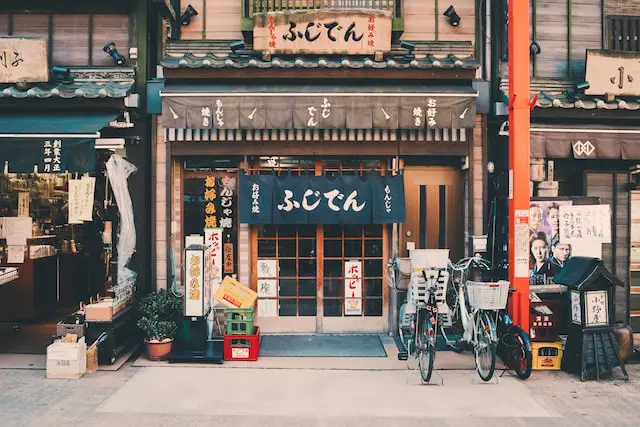Welcome to the Land of the Rising Sun – Japan, a country that harmoniously blends age-old traditions with cutting-edge technology. Topping the list of global travel destinations, Japan offers a diverse blend of cultural heritage, incredible landscapes, cosmopolitan cities, delicious gastronomy, and friendly locals.
For travelers, one practical aspect to reckon with during your visit is understanding and using Japanese Automated Teller Machines (ATMs). Japan maintains a deeply rooted cash-based culture, so having ready access to physical currency is crucial for a smooth and rewarding travel experience. Despite Japan’s advanced technology, cash is vital for everyday transactions in many places, making ATMs an important facility for both locals and travelers.
This travel guide aims to provide crucial tips on how to navigate the world of Japanese ATMs effectively, from understanding the local currency to locating ATMs, operating hours, and handling transaction fees. Let’s get started!
Understanding Currency in Japan
Welcome to the world of yen – the official currency of Japan! The Japanese yen (¥), represented by the code JPY for its international transactions, is available in banknotes of 1,000, 2,000 (although rarely used), 5,000, and 10,000 yen denominations.
Japan is distinct from many Western countries in its strong preference for cash transactions. Despite the growing prevalence of credit cards and mobile payments globally, Japan’s society maintains a deep-seated cash-centric culture. From corner street vendors to some establishments in urban cities, cash remains king and is immensely reliable when navigating this East Asian country.
You might wonder, “Why cash?” Well, this inclination is rooted in Japan’s historical background and cultural values. A cash-based economy is seen as one of the many ways the Japanese prioritize safety and security in their daily transactions. It also highlights their exceptional organizational skills and fastidious nature.
This cash culture in Japan emphasizes the value and role of ATMs. ATMs are ubiquitous throughout Japan, from bustling city streets to quiet rural towns. They’re your lifeline to ensure you’re never left cashless. Knowledge of how to operate these machines will prove invaluable during your sojourn.
A critical point to remember is that not all ATMs in Japan accept foreign cards. However, you’ll find plenty of them in convenience stores and post offices that cater to international travelers. These specially-equipped ATMs not only make withdrawing cash easy, but they also offer instructions in English, contributing to a smoother, hassle-free experience.
Understanding and respecting Japan’s emphasis on cash, as well as becoming proficient in the use of their ATMs, will make your journey more comfortable and rewarding. Let the adventure unfold!
Types of ATMs in Japan
Navigating through the labyrinth of Japanese ATMs may initially seem daunting, yet fear not, dear travelers! Understanding the different types of ATMs available to you in Japan will empower you to manage your cash flow seamlessly as you venture through the land of the rising sun.
The most prevalent type of ATMs that you’ll find belong to the convenience stores. These are open 24 hours a day, and the majority of them will accept international cards. Well-known chains like 7-Eleven, Lawson, and FamilyMart typically have ATMs inside their stores. They are conveniently located in most urban centers, making them an easy choice for many travelers.
Next are the bank ATMs. Banks like Mitsubishi UFJ, SMBC, and Mizuho also provide ATMs. While they have extended operating hours, typically from 8 a.m. to 9 p.m., they are usually closed on weekends and certain holidays. Additionally, not all bank ATMs accept foreign cards, so be sure to check before using them.
The Japan Post Bank ATMs are another viable option. As Japan Post is a national chain, these ATMs are found all across the country, often integrated into local postal offices. They are generally foreign-card friendly and operate from early morning till late evening.
Finally, there are a few international ATMs located primarily in international airports and major cities. Citibank and HSBC offer 24/7 services compatible with international cards.
Having a comprehensive knowledge of these diverse options will equip you to handle your finances effortlessly while on your Japanese journey. Arigato!
How to Find an ATM
If you’re visiting Japan, finding an ATM might initially seem like a daunting task, but rest assured, it’s quite straightforward. Japan is well-equipped with ATMs; they are available in a multitude of locations, including both urban and some rural areas.
Convenience stores are an excellent landmark to start your search for an ATM. Stores like 7-Eleven, FamilyMart, and Lawson are ubiquitous across the country and almost always have an ATM on-site. Their ATMs have multilingual options, including English, making your cash withdrawal process smoother.
Banks are another reliable place to find an ATM. Major banks such as Mitsubishi UFJ, Sumitomo Mitsui, and Mizuho have ATMs that also cater to international credit and debit cards. The downside is that their operating hours are usually more limited compared to convenience store ATMs, and English may not be available at some banks.
The Japan Post Bank provides a wide network of ATMs throughout Japan, conveniently located within post offices. These ATMs offer service in English and can handle international cards, making them an excellent choice for foreign visitors. Watch out for the distinct ‘JP Bank’ and their logo, a stylized representation of a dove, to identify their ATMs.
Finally, if you’re in a pinch and need quick access to an ATM, you can use a ‘Japan ATM Navigator’ or Google Maps to find the closest available one. Type ‘ATM near me’ in the search bar, and you will find many options to choose from.
So, fret not – regardless of where your Japan trip may take you, you are likely to find an accessible ATM nearby.
Operating Hours of ATMs in Japan
In Japan, not all ATMs operate 24 hours a day. Many are kept working within business hours, which typically run from 9 a.m. to 5 p.m. on weekdays. During weekends and national holidays, operations can be different and some ATMs may not work at all. However, you can always rely on those installed at convenience stores, which usually offer 24/7 services.
The ATMs found in large-scale banks, such as Mizuho, MUFG, and SMBC are usually operational between 8:45 a.m. and 6 p.m. on weekdays but they remain closed on weekends and public holidays. Outside operation hours, these ATMs are inaccessible. Therefore, if you’re banking with such institutions, plan accordingly.
Japan Post Bank ATMs have longer hours, generally operating between 8 a.m. and 10 p.m., seven days a week, including holidays. However, keep in mind that these ATMs are often found inside post offices which may limit accessibility after the office closes.
For international travelers demanding flexibility, ATMs at the 24-hour convenience stores, like 7-Eleven, Family Mart, and Lawson are the best options. These ATMs, known as “konbini” ATMs, operate round-the-clock and you are more likely to find English options on the screens.
Though ATMs in Japan have diverse operating hours based on their location and affiliation, planning your cash withdrawals ahead of time and understanding the typical ATM hours can save you from any financial inconvenience.
How to Use an ATM in Japan
Welcome to this definitive guide aimed at easing your journey through the world of financial transactions in the Land of the Rising Sun.
Using an ATM in Japan might seem daunting at first, but knowing the step-by-step process makes it straightforward and hassle-free. So, let us dive into it without any further ado.
Step 1:
Look for an ATM that has an ‘English’ option. ATMs in airports, major convenience stores like 7-Eleven, FamilyMart, and Lawson, or international banks usually have a language selection option.
Step 2:
Insert your card into the machine. Ensure that your card’s magnetic strip is facing down and towards the machine. If the ATM accepts your card type, it will hold onto it for the duration of the transaction.
Step 3:
Choose the ‘English’ option for language, if it is not already selected. The next screen will provide you with various functions such as “withdrawal”, “check balance”, “transfer”, etc.
Step 4:
Navigate to “withdrawal”. You will be asked how much you want to withdraw. Japanese ATMs typically dispense in multiples of 1,000 yen.
Step 5:
Confirm the amount and proceed. The ATM will inform you of a small fee (if applicable), and prompt you for your PIN. Enter your PIN and the machine will process your transaction.
Step 6:
Collect your cash, card, and receipt, if you requested one. Make sure to take everything before you leave the ATM.
Remember, using a Japanese ATM might seem peculiar initially, especially if you are from a country where ATM workflows are different. Keep this guide handy and rest assured, you will sail smoothly through your financial needs in Japan.
Fees and Charges
In your travel to the astonishing land of the rising sun, it is crucial to understand the fees and charges associated with using ATMs there. This knowledge helps you manage your finances wisely and avoid unexpected expenses disrupting your travel budget.
Firstly, it’s worth mentioning that many Japanese ATMs charge a usage fee, particularly for transactions outside business hours. These fees can typically range between 100 to 200 yen. It is, however, important to bear in mind that some banks waive this fee depending on the time of the transaction.
Presently, the key question among international travelers is about the international transaction fees. When you withdraw cash from a foreign account, most Japanese ATMs and your home bank will likely impose a fee. The ATM operator fee widely varies, while your home bank may also charge a non-network ATM fee and a foreign exchange fee. This can accumulate quickly, making frequent cash withdrawals a bit costly.
So how can you minimize these expenses? Planning your cash withdrawal strategy can be a lifesaver. Instead of withdrawing small amounts frequently, consider withdrawing a larger amount fewer times. This can possibly reduce the accumulative cost of transaction fees. Utilizing international ATMs that offer competitive rates, such as those of Japan Post Bank and Seven Bank, is another practical approach.
A great tip also is that some credit cards offer zero foreign transaction fees. These can be beneficial to use for most of your spending, while cash can be reserved for establishments that do not accept cards.
Effective finance management can lead to a smoother and stress-free travel experience in Japan. By comprehending the associated fees and charges, you can strategically plan your expenses, ensuring a worry-free exploration of the captivating Far East.
Conclusion
In your grand adventure throughout the Land of the Rising Sun, understanding the complex world of Japanese ATMs is an important footstep. Japan retains a fondness for cash transactions, rendering the knowledge of operating local ATMs essential for any traveler.
Remember, you’ll mostly come across three types of ATMs in Japan – those in convenience stores, bank ATMs, and Japan Post Bank ATMs. Finding one should be quite straightforward – just look out for convenience stores like 7-Eleven, Lawson or FamilyMart; banks; or post offices. They usually have English languaged ATMs, making the process easier for non-Japanese speakers.
The ATMs operate under different timings, primarily based on their locations. While most of them function round-the-clock, you might come across some with specific operating hours, especially on weekends and holidays. Always plan ahead to avoid predicaments!
Using ATMs in Japan is usually a straightforward process, albeit a few steps to follow. Key points – always pick the English language option and then proceed with the on-screen instructions for withdrawals.
But remember, using ATMs may involve fees, especially for foreign transactions. These costs can significantly impact your travel budget if not managed properly. Consider withdrawing larger amounts less frequently to keep transaction charges at a minimum.
In conclusion, while the world of Japanese ATMs may seem intimidating initially, it is nothing more than a fence to jump over; the more you know, the easier it gets. Armed with this guide, you’re now prepared to navigate your financial needs effortlessly during your Japanese journey. Engage yourself in the rich culture, beautiful landscapes, and delightful cuisine that Japan has to offer, handling your cash needs like a pro. Safe and seamless travels to you!




